One of the best things I ever learned was how to sew. It’s a truly useful skill that always seems to come in handy and makes a great hobby. And I love sharing all the best tips and tricks to learn to sew, because I don’t want to be the ONLY one that knows how to sew, right?! That’s no fun! It’s like when you own a truck and all your friends want you to come to help them move. Being the only person that knows how to sew, that’s a bummer! So, of course, I’m here sharing all the nitty-gritty details about everything I wish I’d know when I started sewing. I share with you How to Sew – A Beginners Guide to Sewing that covers everything from the basics of what you need to get started, a little breakdown of what it means to do hand sewing vs. sewing with a machine (and the benefits you can get for both), as well as some of my favorite sewing tips – and as a bonus, my favorite FREE sewing patterns and tutorials that are awesome for beginners and absolutely fun. If this sounds up your alley, but you’re not quite up to the challenge yet (or you just want to come back to it again because it’s a lot of information), be sure to pin this to your favorite sewing tips board on Pinterest so you can find it again quickly when you’re ready for your new hobby.

But, if you’re ready to find out how to sew from someone that started out small and worked up to full pattern-making, let’s get our needle and thread and get sewing!
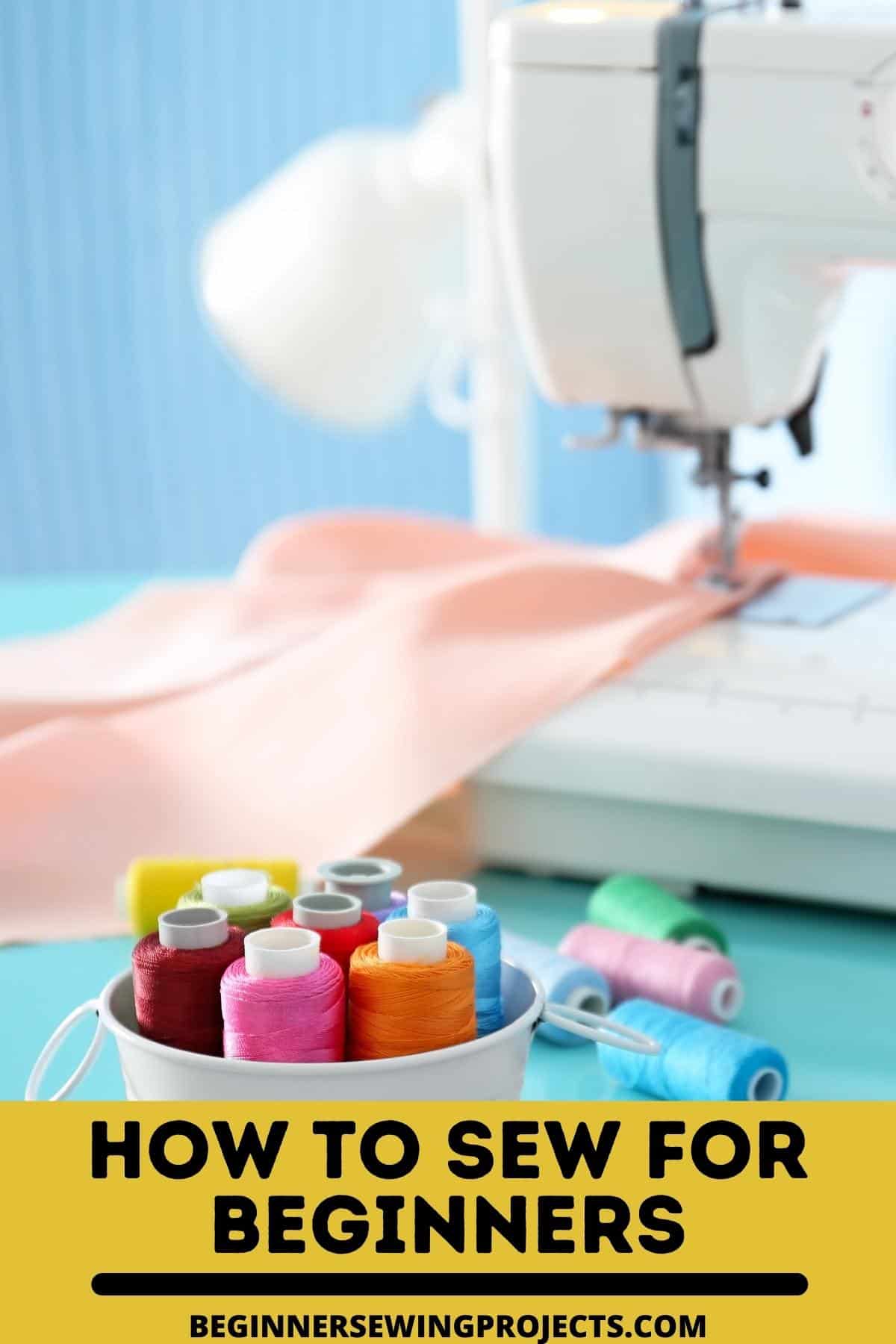
How To Sew For Beginners
There aren’t a lot of things that I like to do as consistently as I like sewing. Whether it’s a special request from one of the kids, a little gift for the hubby, or a special something for myself, every sewing project is unique and fun in its own way. Even if I’m making the same thing repeatedly, each piece of cloth is a unique challenge that requires its own solutions. Small-scale engineering, sewing is one of those things that just sparks the creative genes in me.

But while the excitement of the challenge keeps me motivated to do more, that same excitement was not the fuel that drove me to learn how to sew. As a matter of fact, it was the opposite. I felt quite intimidated by all the decision-making and not having the tools – that I didn’t even know I needed – to make my life easier. Knowing that this is what you’re likely going to be (or maybe are already are) running into, I thought I would share some basic sewing concepts that you need to learn – in a no-judgment zone!
Basics – What You Need

As I share with you how to sew – a beginners guide sewing I wanted to let you know I have 3 things I keep around at all times that I feel like I have to have when I’m sewing – no matter the project. Seriously, just 3 things:
- Needle
- Thread
- Fabric
These may seem like “no joke” items to you. But if you think about it, this is seriously all you need to start learning to sew. All the fancy things – including scissors, needle threaders and thimbles, are all “extra” niceties.

It’s gotten to where I actually have a tiny sewing kit with a little thread and a needle in my purse at all times, too, because you never know when a soccer game is going to bring you a torn jersey at half-time, a horse-riding lesson might require a sock to be stitched-up quickly, or a quick business meeting might be stalled because of a fallen leg hem. All of these things have literally happened to me – and I have been saved by that bit of needle and thread. It seems silly, but this little kit here is really a lifesaver.
That being said, if I have control over my surroundings, I like to keep a few things in the craft room, my sewing box, or just in the utility drawer, so I have them in case a real sewing project comes my way:
- A good pair of scissors (not the kind you keep in the utility drawer – you want sharp, GOOD scissors – so a designated “fabric only” pair)
- Extra thread (I keep 4-5 spools of white and black always)
- Fabric tape measure (for measuring heads, arms, devices, anything – the most versatile tape measure ever)
- Needle Minder (either a magnet or a pin cushion, a piece of tape, something to keep your needle from rolling off mid-project)
- Sewing Pins or Clips (maybe it’s obvious, maybe it’s not, but you need a lot of pins sometimes and sometimes you don’t – just better to have them around)
- Washable Marker or Pencil (like having a magic disappearing ink trick, these are perfect for tracing your patterns and come in handy for notes to yourself for when you’re sewing)
- Washi Tape (keep reading below for my tips – this is genius for beginners)
If you would like to know more about building a sewing kit for beginners, I have a great resource here I wish I’d had when I was learning to sew. There’s a little bit of everything, but more than just being a list of tools, it will explain why each item is helpful to have and you can decide if you really feel like you’ll need it or not.
Now that the basics are all out of the way, let’s break down the big question: do you hand sew it or do you break out the sewing machine – which is best?
Hand Sewing vs. Machine Sewing

There’s more to sewing than the beginner stitch, in and out. I think we all know that or we wouldn’t be here. But one of the biggest decisions you’ll have to make as a sewist is whether to hand sew or use your sewing machine.
Frankly, once you have gone through the effort of each a few times, you’re going to develop a preference and know how to answer this question on your own without pondering.
In the beginning, though, there are some things you’ll want to take a moment to consider.
Hand Sewing
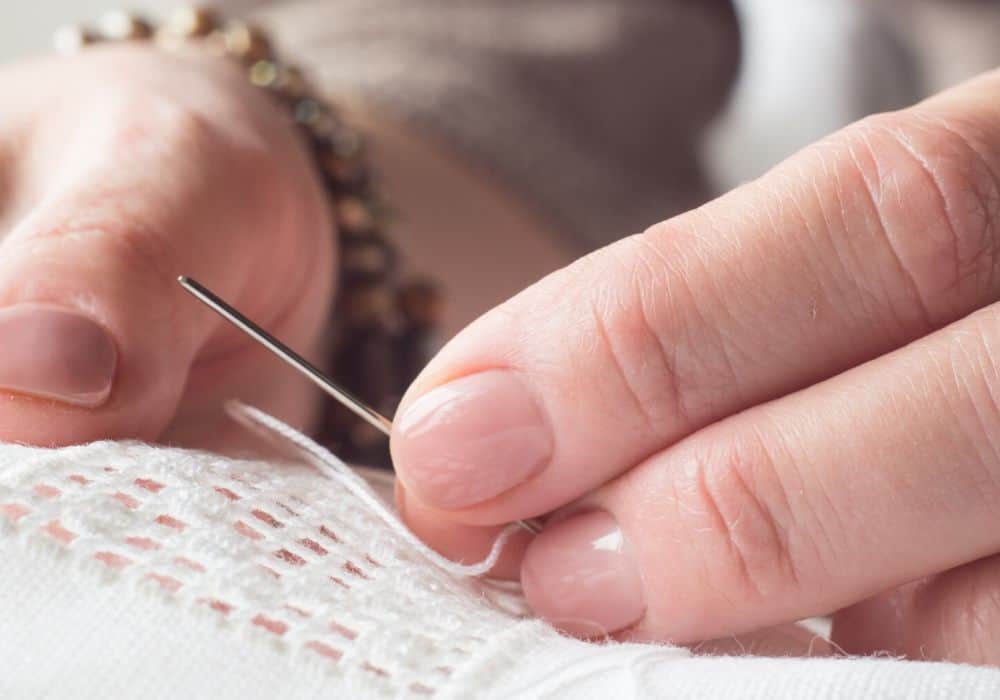
This can be tedious and nerve-wracking at first, but it does get better. There are a lot of stitches and ways to go about hand sewing, making it seem a little overwhelming. But it does not have to be that way.
Hand sewing is a skill that you can easily build, just by practicing. Pick one stitch to start with. You can go with the blanket stitch, for instance, where you go in and through, pull your thread around your piece, then go in on the same side again. You will find that with a basic stitch like this, you can learn to move quickly and cleanly, making a neat stitch.
Hand sewing is particularly good to use when you are working with small areas, tight corners, or particularly thick fabric. If the piece is small and it’s not worth breaking out my sewing machine, having good hand sewing skills becomes a time-saver.
Plus sewing by hand can be very relaxing and rewarding.
Machine Sewing
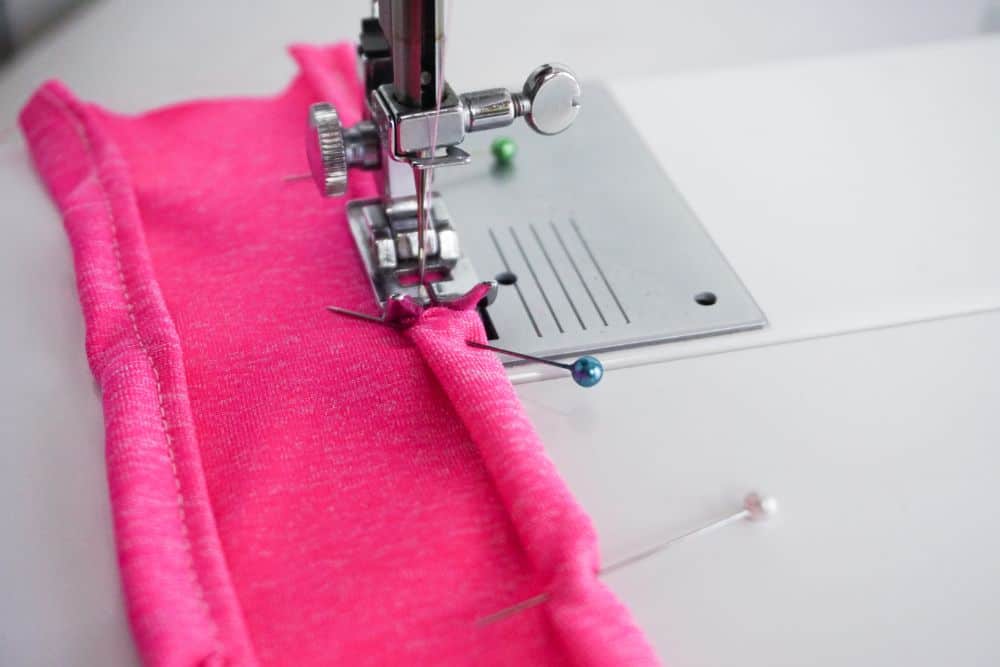
While this can go very fast, particularly if you have long runs or large projects, machine sewing can be particularly frustrating if you don’t understand how the machine works. So the first thing I suggest is reading your sewing machine manual. Even look some tutorials up online if you can, for your particular machine. This will make threading the machine so much more simple if you can see a video of it and control which step you’re viewing. I particularly like sewing with a machine when I have some time to get the machine, clean it, set it up, do a big project, then clean the machine and put it away. If I am in a time-crunch, the project is small, I’ll grab my hand sewing kit. But, if there’s a bit of time and the project is more than just an inch or two, I see the time-saving benefit of sewing with the machine.-
Plus I see a definite uptick in the quality of my hems if it’s a longer hem, particularly, when I use a machine. With hand-sewing, a long hem can really wear my hand out, frustrating me unconsciously even, so big projects definitely get the machine.

Whichever method you prefer to use to sew, I created a few sewing practice sheets that you can quickly print out and use to help improve your skills.
My Favorite Sewing Tips for Beginners
Now, I’m not a sewing-snob by any means. I’ll sew using any tools provided, given that they function. I mean, obviously, a rusty needle would be horrible to work with, but barring that, we’re good. However, there are some things that I feel like make learning how to sew SO MUCH easier and I just won’t sew anymore without taking these sewing hacks and running with them.
- Washi tape gives you the “perfect hem”. Now, I know that hack seems like it’s a bit far-reaching – a little click-baitey. But I’m just paraphrasing. The idea is, if you put washi tape down your traced pattern lines, just inside where you need to cut, you are doing four fantastic things:
- Marking where your scissors should go in a clear, visible way that really stands out.
- Stiffening the fabric where you plan to cut. Especially with thin, flexible fabrics, this is a huge help. That little extra stiffness the tape gives the fabric is going to reduce the movement of the fabric and you’ll appreciate it.
- Once the fabric is cut, the washi tape is going to help your fabric keep from fraying. Which, in turn, will make your sewn project look so much nicer – because frayed fabric leaves all those little hanging-off threads at your hems and it’s a mess. Just wait until you have sewed your hem and then peel the tape off, then any remaining tape residue will be washed away in the washing machine.
- Marking your hemline. Washi tape is going to give you a definite location for your hems, exactly the correct distance from your cut line, every time. Just make sure it’s ¼ inch wide and you’re going to be able to mark your hemline on most sewing projects with no mess. Plus, having the tape in place will give you a strong edge to follow when you’re sewing by hand or with the sewing machine.
- Needle wax makes your needles slip through any fabric like a hot knife through butter, This is something my grandmother used to say and I would laugh – not really understanding. Now, though, now that I have taken up sewing more frequently, that needle wax sewing tip from granny really has come in handy. If the needle is the least dry or the fabric has a tight weave – slipping the needle through wax is going to resolve any drag and resistance you feel, making your task so much easier.
- Go slow and steady. This final tip is great for basically any new craft or hobby you want to take up. I won’t kid you with some parable about turtles and rabbits, but the sentiment is very true. Going slowly, whether you’re sewing by hand or with the machine, will give you more control over where your next stitch is going to land and at what angle, etc. In addition, going slowly is going to allow you to correct mistakes as you go, as you notice them before it’s too late. I really should have this as my top tip, but it’s so good, I don’t want you to forget it!
Beginner Sewing Patterns to Try
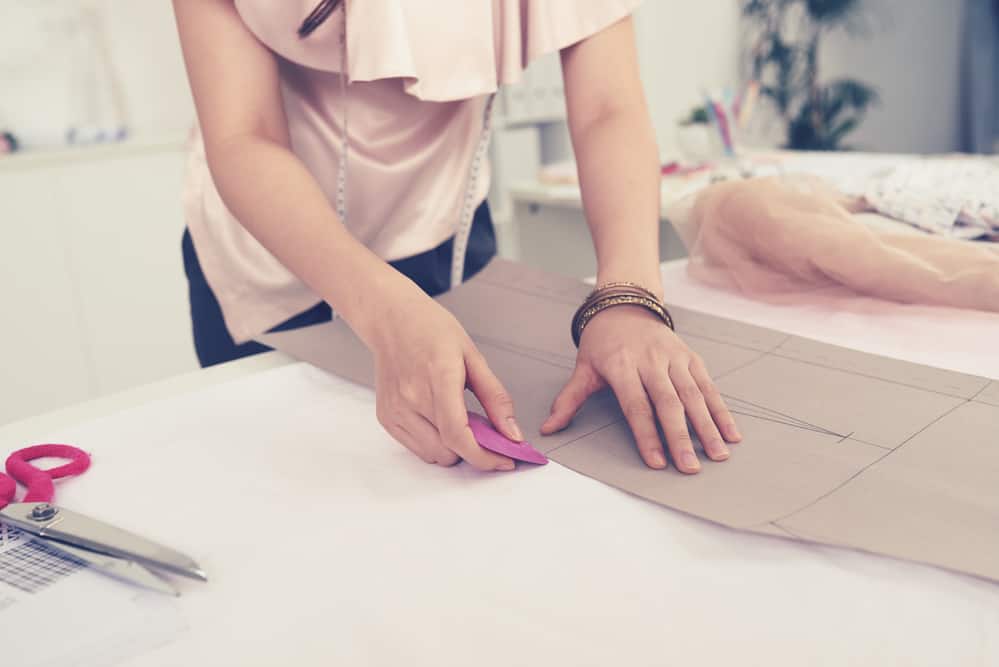
I have amassed quite the big collection of sewing patterns that I love. But I didn’t start sewing with patterns. To be honest, they were confusing and a bit overwhelming. This is something that I really regret. If I had taken the time to learn how to use a sewing pattern, I feel that I would have taken a very large leap in my sewing confidence level. Check out these DIY Sewing Pattern Weights to help keep these patterns in place while you sew or cut your fabric.
And with sewing, a little bit of confidence can go a long way.
So, I have pulled together some of the best beginner sewing patterns to try and build your confidence as a sewist so you can grow your skills and become a pro.
- Baby Burp Cloth – A simple rectangle with a few layers that gives you easy directions to build a truly basic piece, but perfect for a beginner. No baby in your life? Don’t worry about it, these burp cloths are actually great for wiping up any mess, not just baby burp.
- Felt Butterfly Plush Template – Fast and easy even for a first-time sewing project, this is a great way to learn how to sew by hand – and felt is fantastic to work with because it’s no-fray!
- Removable Swiffer Pad – One of the best first-time sewist crafts because you can make this, saving money, and giving yourself a little improvement on a tool you use in your house regularly.
- Jean Ball Dog Toy – If you have a furry friend, these dog toy jean ball is perfect to make a gift for that buddy that will help you practice your skills.
- DIY Phone Case – Everybody needs a phone case or a small pouch for, well, stuff. Whether you want to pop it in your purse, give it as a gift, or just keep it in your office, you can make these in a jiffy, once you’re building basic sewing projects.
- Hidden Pocket Scrunchie – One thing I love about sewing is making customized projects and this one takes the cake – perfect for anytime you don’t want to carry a purse, but you need a little cash, key or something you have to keep up with.
- Dishtowel Kids Apron Pattern and Tutorial – If your little ones like to help in the kitchen, make them their own apron. How cute is this!
- Skillet Handle Cover – If you’re not cooking with a handle cover, you don’t know how to live. So ridiculously handy to have around, you can make these in a flash, once you have a few stitches down.
- Popsicle Sleeves – As a mom, this is a lifesaver – or at least a couch saver. All those popsicle drips are eliminated, all the whining of “it’s too cold” are quashed. Plus its super simple to make and fast, even if you’re making several.
- Reversible Shopping Bag – This fun little bag comes in handy in all kinds of scenarios. Pick out some cute fabric and you’ll always be ready for those spontaneous trips to the store.
Be sure to check out our list of 28 Easy Beginner Sewing Projects You Can Make Today!
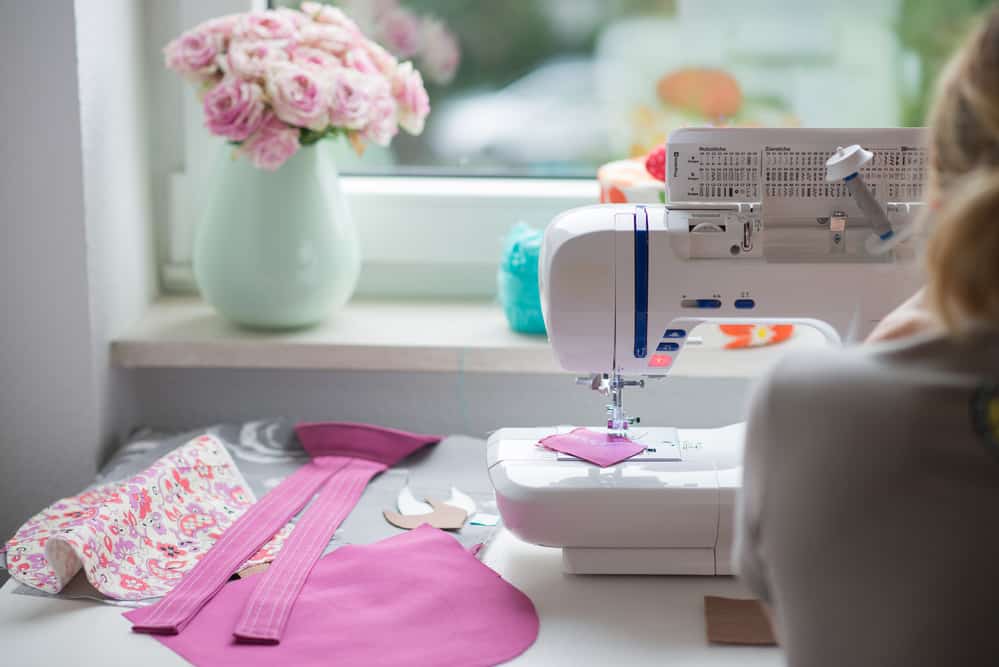
See? That’s all there is to it! Learning how to sew is going to be so easy for you now, with these beginner tips and tricks. I’ll be forever grateful to the few that helped me learn how to sew, and hopefully by sharing what I’ve learned, I’m passing-on all help they gave me. We also cover basics like How to Start a Stitch on a Sewing Machine, guides for buying fabric online, defining lengths of fabric, squaring up fabric, and more!
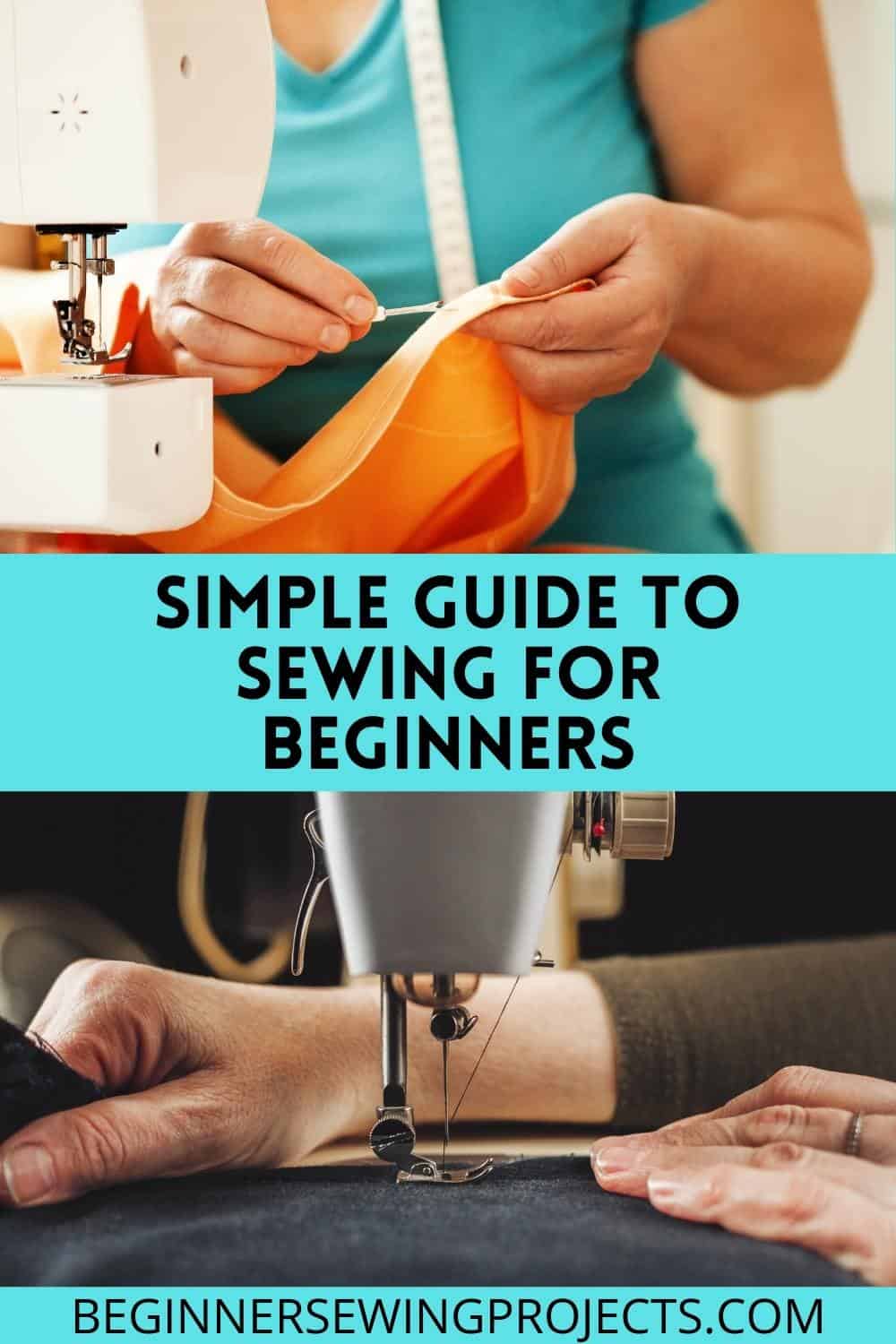
If you liked this how to sew for beginners guide, make sure to pin it to your favorite Pinterest board or share it with friends on social media. if you decide to make this simple project on your own, make certain that you take a picture afterward and tag us on social media as we love seeing the fabrics and color choices that people use!
